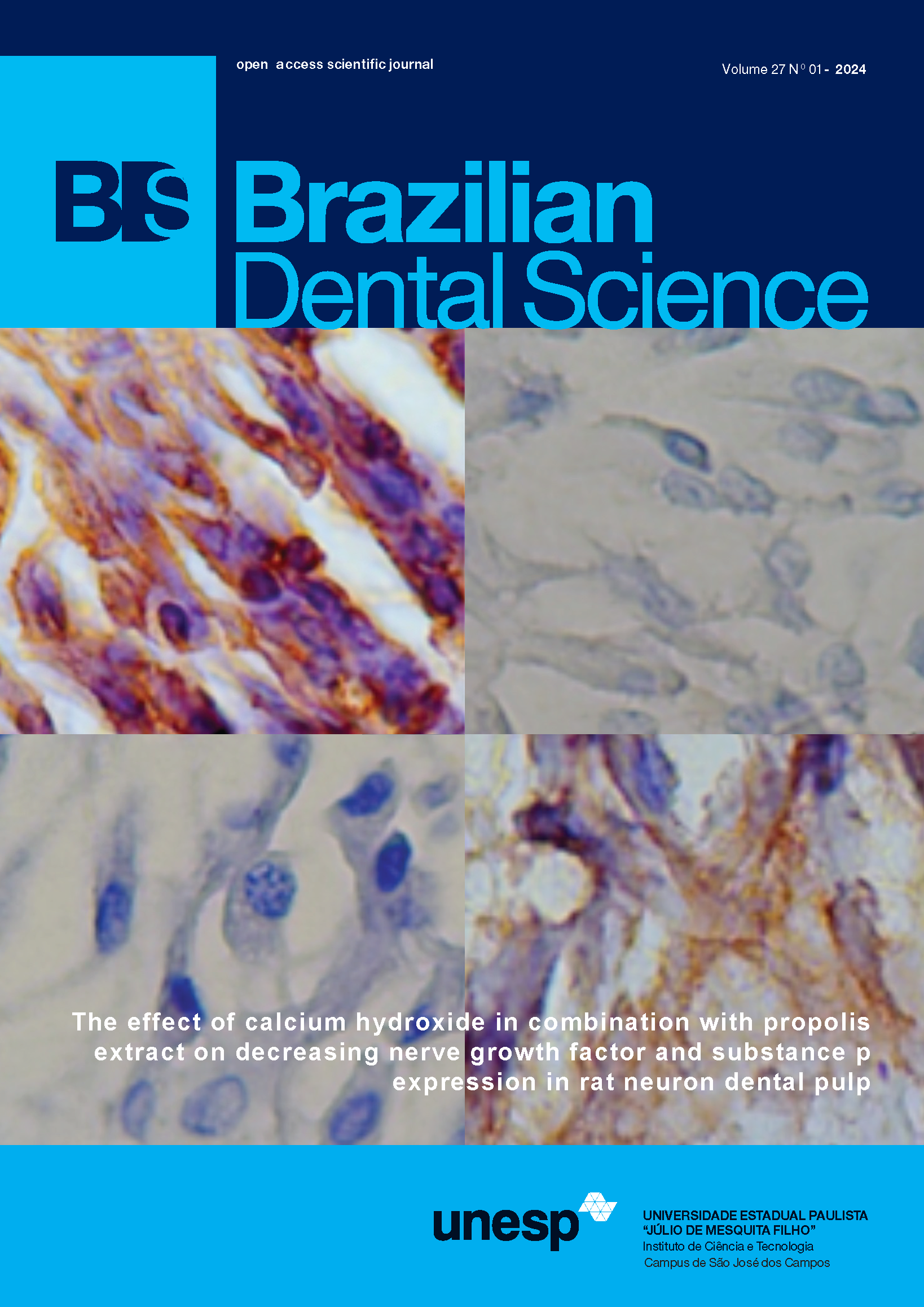Antimicrobial activity of Er,Cr:YSGG and Ultrasonic on E. faecalis biofilm in the mesial root canal systems of lower molars
DOI:
https://doi.org/10.4322/bds.2024.e3904Resumo
The internal topography of the root canal is complex, especially for the permanent molar’s mesial root. In response to such issues, improved irrigation techniques have been created, which use laser pulses to agitate fluids and improve microbial deposit removal. Objective: To assess the effectiveness of the Er,Cr:YSGG laser with a wavelength of 2,780 nm via photon-induced photoacoustic streaming (PIPS) protocol which agitated of 2% chlorohexidine (CHX) in removing mature Enterococcus faecalis (E. faecalis) biofilm in root canal systems of lower molars. Material and Methods: The mesial roots of lower first and second molars were separated and inoculated with E. faecalis bacterial suspension for 30 days. The roots were irrigated with CHX, some of them were agitated with a passive ultrasonic device (PUI), while the other roots were agitated by an Er,Cr:YSGG laser in PIPS at 60 micro s/pulse, 5 Hz, (0.25, 0.5, 0.75, and 1) W. An atomic force microscope (AFM) was used as a new method to get the results in the isthmus area; the obtained results from each group were compared with each other. Results: Based on the AFM and SEM analyses, laser and ultrasonic activation groups showed higher antimicrobial efficacy than the conventional syringe irrigation group (P<0.05). Conclusion: Based on the investigation’s findings, the activation of 2% CHX solution by Er,Cr:YSGG laser in PIPS and PUI offers better mature bacterial biofilm removal in the mesial root of lower human molars than the same irrigant with the SI technique.
KEYWORDS
2% Chlorhexidine gluconate; Atomic force microscope; Enterococcus faecalis biofilm; Er,Cr:YSGG laser; Passive ultrasonic activation.
Downloads
Downloads
Publicado
Como Citar
Edição
Seção
Licença
TRANSFERÊNCIA DE DIREITOS AUTORAIS E DECLARAÇÃO DE RESPONSABILIDADE
Toda a propriedade de direitos autorais do artigo "____________________________________________________________________" é transferido do autor(es) para a CIÊNCIA ODONTOLÓGICA BRASILEIRA, no caso do trabalho ser publicado. O artigo não foi publicado em outro lugar e não foi submetido simultaneamente para publicação em outra revista.
Vimos por meio deste, atestar que trabalho é original e não apresenta dados manipulados, fraude ou plágio. Fizemos contribuição científica significativa para o estudo e estamos cientes dos dados apresentados e de acordo com a versão final do artigo. Assumimos total responsabilidade pelos aspectos éticos do estudo.
Este texto deve ser impresso e assinado por todos os autores. A versão digitalizada deverá ser apresentada como arquivo suplementar durante o processo de submissão.




























